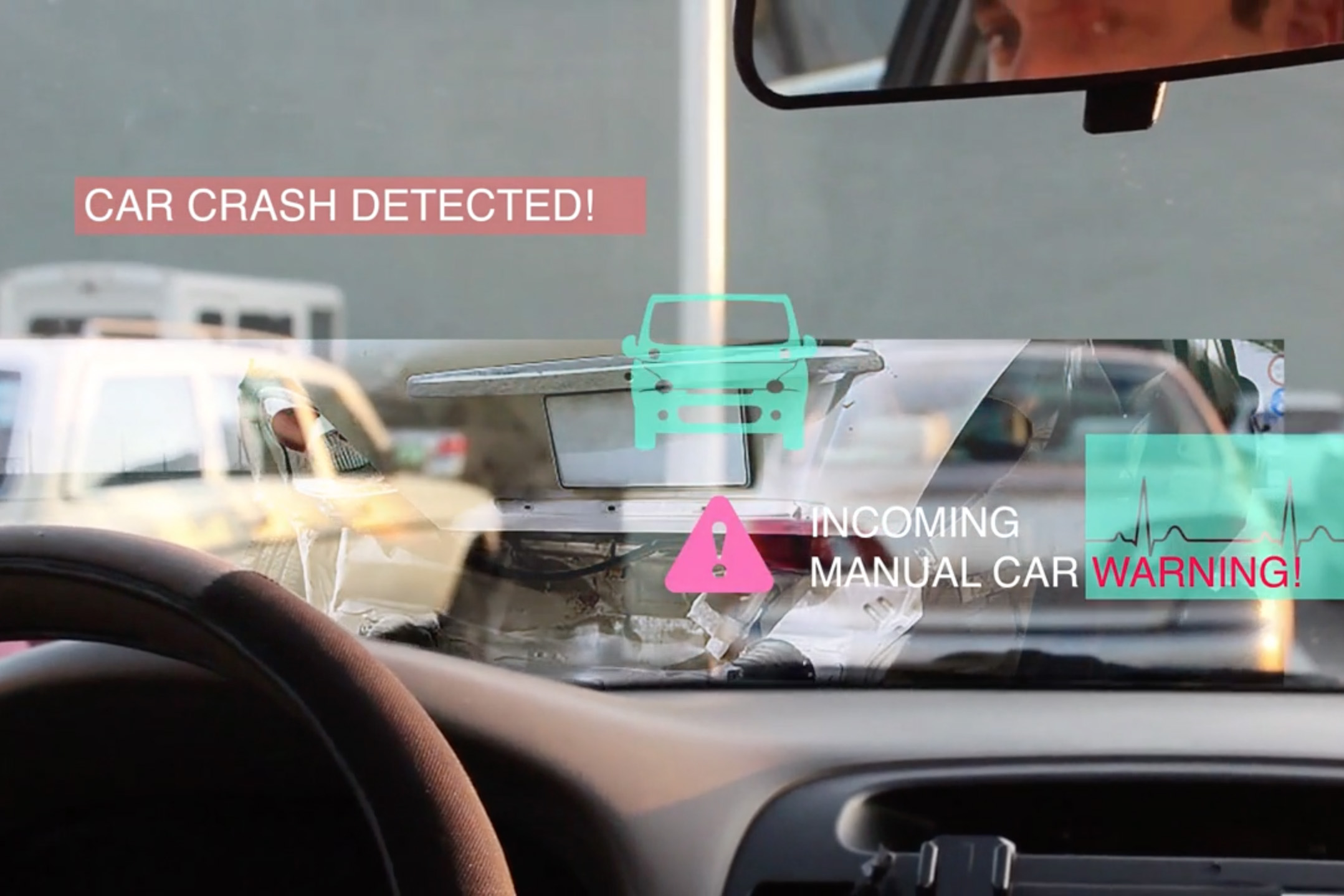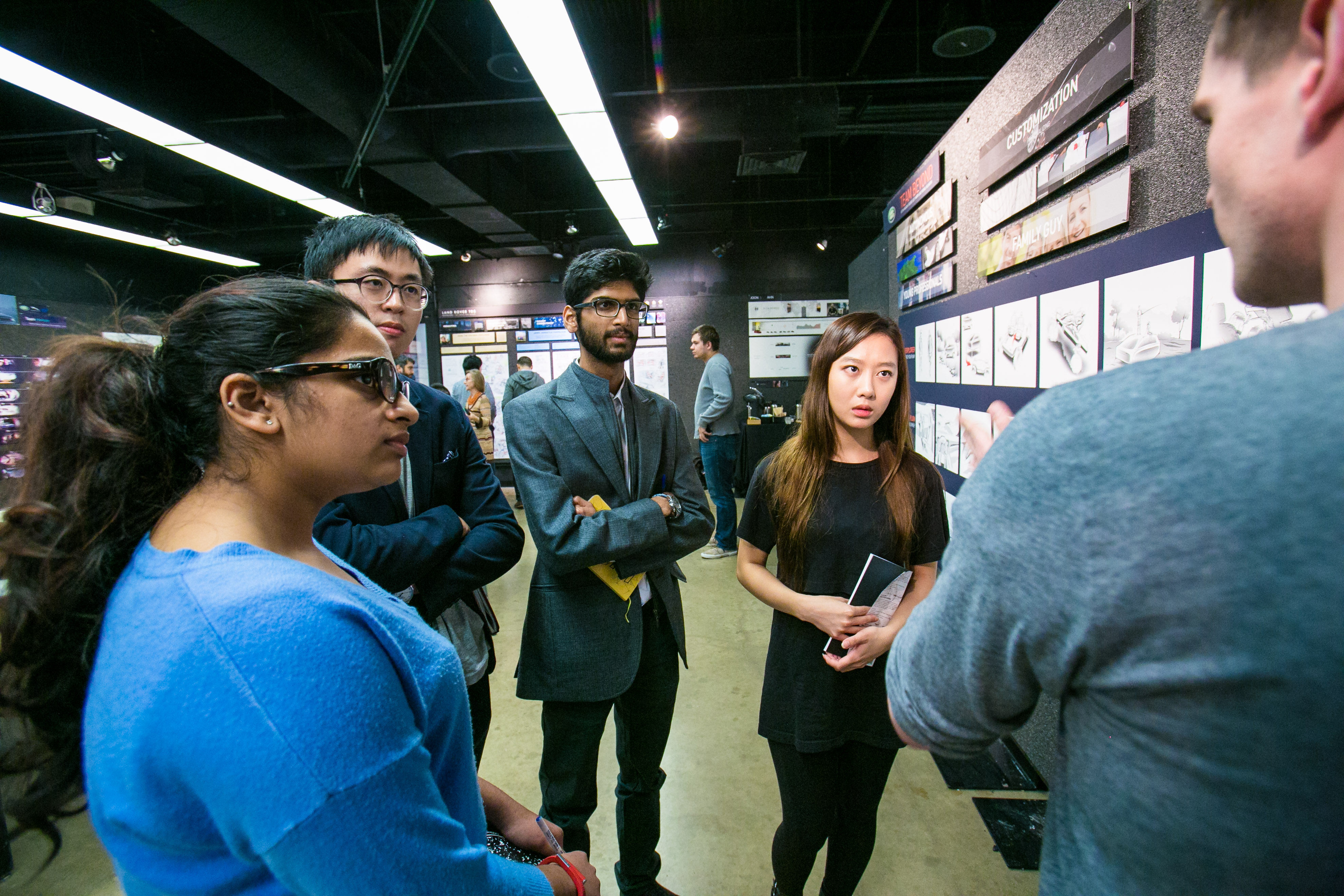feature / faculty / students / media-design-practices / sponsored-projects
June 11, 2015
Writer: Mike Winder
Move over, Siri, and let Nan Wang’s Cartner do the driving
Earlier this week at its WWDC 2015 developer’s conference, Apple announced that iOS 9–the next iteration of its operating system for its iPhone and iPad devices–will include a beefed-up “proactive” version of its voice-driven Siri software that will anticipate user’s needs and deliver relevant information in a timely manner.
Cool stuff, right? Now imagine how such a human-computer interface might evolve. And imagine it in your car.
That’s precisely what graduate Media Design Practices (MDP) student Nan Wang envisioned last fall in a course entitled New Car Experiences.
We immersed ourselves in the current visions of the automotive future. It soon became apparent there wasn’t one clear view, and that there was space for fresh thinking in this arena.
Ben HookerAssociate Professor
In that studio course led by Associate Professor Ben Hooker, MDP students spent the entire 14-week term creating “video sketches”–polished visualizations intended to spark discussion–based on student research conducted during the previous term in a class also led by Hooker and his MDP colleague Professor Tim Durfee.
“We immersed ourselves in the current visions of the automotive future to find out how different industries think things are going to play out,” says Hooker, whose expertise lies in collaborations within the field of human-computer interaction, of the research that led to the video sketches. “It soon became apparent there wasn’t one clear view, and that there was space for fresh thinking in this arena.”
That studio was just one of several investigations into the Internet of Things (yes, the car is a thing!) that chipmaker Intel sponsored at ArtCenter, which was one of five international institutions to join the tech firm’s inaugural Design School Network.
But back to Wang’s project.
If you think of a vehicle as something which traverses a terrain, what does it mean when that terrain has an electronic dimensionality?
Ben HookerAssociate Professor
Her video sketch presented a playful concept called Cartner, an intelligent interactive system that forms an emotional relationship between the driver and the vehicle (think Jarvis in Iron Man or Samantha in Her).
In Wang’s friendly Cartner, the car “listens” to the driver using both voice and touch to create a safe and intuitive driving experience that forgoes complex dashboards and other distractions. Cartner monitors the vehicle’s surrounding environment, the driver’s habits and, yes, even her shifting emotional states, and then interacts in a manner both safe and recognizably human.
Wang’s video shows Cartner assisting the driver by providing relevant information in a lighthearted manner–everything from vehicle maintenance reminders (“I know there’s a gas station at the halfway point to our destination. Come on, let’s get some food.”) and appointment reminders for her personal life (“Wow, two cups of coffee … looks like somebody has a date today.”).
As imagined, it’s a concept that could provide a comfortable bridge from the experience of driving your car to being driven by your car and would no doubt put every single one of Intel’s myriad of sensors to work.
Other student “video sketches” from the New Car Experiences studio included a mesmerizing augmented reality scenario by Zhihan Ying showing how cities and corporations could take advertising to a claustrophobia-inducing level; and a collision of automotive and social media experiences by Elaine Cheung and Shan Shen that imagines how drivers in networked cars could communicate with one another.
All these concepts played the crucial role of providing inspiration for the transdisciplinary New Car Experiences studio course the following term. In that course, sponsored by Jaguar Land Rover and Intel, graduate and undergraduate students from different departments put their minds together to imagine what the driving experience might look like in 2025.
“If you think of a vehicle as something which traverses a terrain, what does it mean when that terrain has an electronic dimensionality,” says Hooker of the digital landscape he asked his students to consider when creating their videos. “Visualizing that, which is no trivial task, is a way of understanding possibilities for connections.”
And the connections Hooker’s classes created and the discussions they sparked went beyond the future of the automobile.
Indeed, it was the bringing together of different disciplines, communities and industries through research and making that ArtCenter President Lorne M. Buchman celebrated during his introduction to last month’s Autospaces 2025: Future Car Experiences symposium.
“There are ways of opening up possibilities that come from convening diverse points of view that are essential to great learning, great education and design itself,” said Buchman about the symposium. “That kind of rich interplay between making and knowing takes on a form here that is critical.”





